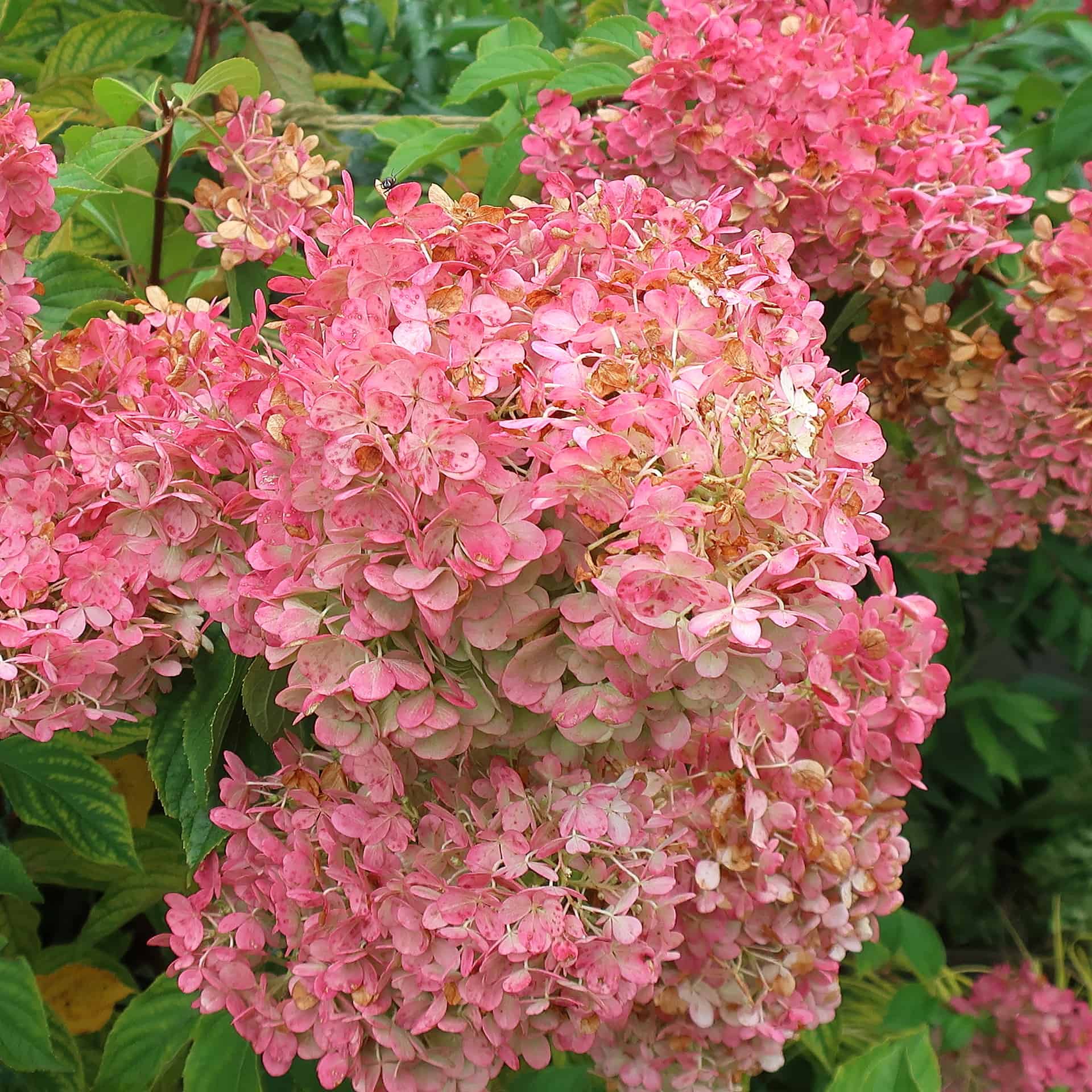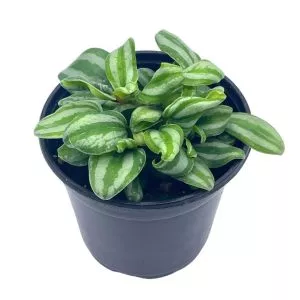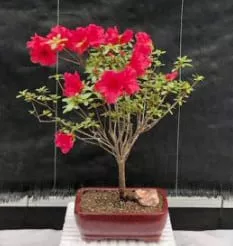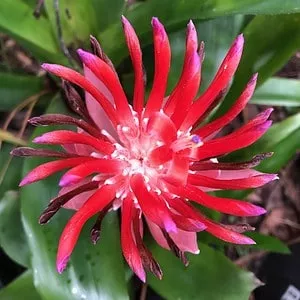No products in the cart.
Looking at this outdoor plant makes me feel like eating yummy strawberry vanilla ice cream, don’t you agree? Now imagine the burst of color in your garden when the Strawberry Vanilla hydrangea grows in your garden.
WOW, you will see a burst of color, always making you think 🤔 of eating dessert. Still, it makes for a great treat in the garden, as you are not stuck with one floral color as this plant has something interesting up its sleeve. Want to find out what it is? Then keep reading.
Plant Name: Hydrangea paniculata ‘Renhy.’
Other Name: Strawberry Vanilla Hydrangea
Plant Type: Deciduous Shrubs
Native Areas: Cultivar
Light Requirement: Full Sun
Watering: Average Water
Fertilizer: Slow Release Fertilizer
Toxicity: Toxic to humans and pets
Temperature: Tolerate temperatures down to -30°F
Propagation: Copyright Cultivated Cultivar
Growth: 7 feet tall and 5 feet wide
Soil Type: Well-Drained Soil
USDA Hardiness Zones: 3-8
More About Strawberry Vanilla Hydrangea
The vanilla strawberry hydrangea flowers are the commercial trade name of the Hydrangea paniculata.
The plant changes color throughout the season’s blooms from creamy white flowers to turn pink, and it matures to a strawberry red. Still, the color change does not happen uniformly but creates a bi-colored flower bud.
These flowering shrubs have large flower heads with a pastel pink tint morphing to a deep hue until you have pinkish-red stems and blooms. The Strawberry Vanilla hydrangeas usually are sold as potted nursery plants in early fall or spring.
As with most Hydrangea paniculata species, it is fast-growing and can achieve a mature height within a year.
Strawberry Vanilla Hydrangea Care

Vanilla strawberry hydrangea flowers do best in well-drained soil standing in full sun.
When you plant hydrangea, dig a giant hole twice the size of the container and plant the root ball at the same height as in the container.
Then backfill and water your plant well. Another notable thing is that this flowering shrub blooms on the new wood and is best pruned in late winter or early spring.
Recommended Soil For Vanilla Strawberry Hydrangea Flowers

Although the Strawberry Vanilla hydrangea is not a fussy plant regarding your potting medium, it will grow best in organically rich moist soil. What is essential is that it needs good drainage. Still, the Strawberry Vanilla does like slightly acidic soil.
Where to Plant Vanilla Strawberry Hydrangea?
The best spot for Strawberry Vanilla hydrangea is full sun for beautiful blooms and vigorous growth.
The vanilla strawberry shrub needs six hours of direct sunlight with afternoon shade. Your plant will become leggy with fewer blooms when grown in a shady spot.
Watering Hydrangea

These panicle hydrangeas have an average watering need of about one inch a week. As a rule, goes feel the top few inches of the soil if it is dry.
With the lack of water, it will reduce flowering. As you know, other hydrangeas make for fabulous cut flowers. Once the hydrangea goes into winter dormancy, you need not water often.
Now imagine having these strawberry red flowers with green leaves in a vase.
Temperature and Humidity
The Strawberry Vanilla hydrangea is hardy in growing zones four up to 8 and can survive growing zone 3 with winter protection. It can tolerate temperatures down to -30°F. While in a humid climate zone, it can become susceptible to diseases.
When grown in zone 3, it is best to water your shrubs well in late fall and cover the root zone with mulch or organic matter for protection. As mid-summer progresses, refrain from feeding after the flower heads appear, as you do not want to stimulate new growth injured in winter.
Fertilizing Hydrangeas

When your plants grow in poor ground, we recommend feeding them well. It helps to amend the potting medium with compost yearly or supplement the manure using a slow-release balanced fertilizer in early spring when new growth starts. After summer progresses, withhold the feeding as your plant enters the dormant stage.
Pruning Vanilla Strawberry Hydrangeas
The flower heads of the Strawberry Vanilla grow on new wood from the current growing season. Hence, pruning must be done after flowering in the late autumn or early spring.
When you prune at the wrong time, you will have fewer flower buds as you have removed the new growth. Neither should you prune young plants until they have reached a mature height when five or six years old.
Removing damaged branches or removing one-third of the top plant can help to keep it healthy and provide air circulation to help prevent diseases. Still, too much pruning will result in larger blooms but fewer flowers.
When your shrubs are overgrown, you can chop them back to the ground as they will come back healthy.
Potting Your Vanilla Strawberry Hydrangea

Container culture is not recommended for this plant, but as the Strawberry Vanilla remains small, it can look great on the patio or a deck growing in a container.
Choose container sizes that are up to 24 inches wide with good drainage. Choose a frost-proof pot like plastic or wood.
Fill the container with potting mix and water them often but stop feeding them in late fall. Overwintering helps to move the container into a sheltered spot.
Propagating Strawberry Vanilla Hydrangea
Propagating the vanilla strawberry hydrangea is prohibited as it is a trademarked and copyrighted cultivar, which can lead to legal consequences. Even seed propagation cannot be done as the plant’s flowers are sterile.
Hydrangea Varieties
The vanilla strawberry hydrangea is one unique plant, but other cultivars are also outstanding, as seen here:
Hydrangea macrophylla

The shrub has big leaves and can vary in flower colors depending on the pH level.
Hydrangea quercifolia

While not valued much for the flowers, people love to have them in the garden for the oak leaf resemblance.
Hydrangea arborescens

The shrub has a large flower head that makes a statement in the garden.
Hydrangea petiolaris

Compared to the other hydrangeas, this is a vining plant to climb fences or trellises.
Common Diseases and Pests
As with most hydrangeas, the Strawberry Vanilla hydrangea can suffer from different diseases like:
Blight
Powdery Mildew
Bacterial Wilt
Leaf Spot
Rust
The crucial thing is to provide your vanilla strawberry hydrangea with enough air circulation and enough distance from other plants. Common pests are spider mites and aphids, and can spray neem oil to other organic insecticides to remove them.
Frequently Asked Questions
The two flowering hydrangeas have similar bloom colors as both begin creamy white and change to a deep pink color when the temperature cools down in the fall. The main difference is the size of the plants, as the Strawberry Sundae has a more compact growth than the Strawberry Vanilla hydrangea.
The only hydrangea with a delicate smell is the Hydrangea macrophylla Ayesha.
The hardiest hydrangea to grow is the panicle hydrangea which copes well in the growing zone 4-8.
When grown in alkaline soil, the flowers change to pink and blue in acidic soil. Hence, by mixing some apple cider vinegar with water, you can treat your acid-loving plant or change the color as needed.
Luckily this is not a rare plant and is found at many local nurseries and online dealers. But for your convenience, Plantly has the Strawberry Vanilla hydrangeas right here to buy.
Whether you want to buy, sell, or simply reach out to other plant enthusiasts, Plantly is the right place to be!
-
$10.99Sold By: BubbleBlooms
$12.99In stock
Begonia Rex, Fireworks, 4 inch pot, Unique Homegrown Exclusive
Only 47 available and it’s in 1 people’s basketRated 4.81 out of 5 based on 279 customer ratings00Sold By: BubbleBlooms -
$14.99Sold By: BubbleBlooms
In stock
Peperomia Mini Watermelon, 4 inch verschaffeltii, Steve’s Leaves
Rated 4.81 out of 5 based on 279 customer ratings00Sold By: BubbleBlooms -
Free Shipping$126.13Sold By: BONSAI WORLD LLC
Only 1 left in stock
Flowering Tropical Red Azalea Bonsai Tree (rhododendron ‘red vi
Sold By: BONSAI WORLD LLC -
Free Shipping$15.95Sold By: SunSoul Plants
$19.95In stock
Flaming Torch Bromeliad Plant in 3″ pot, free shipping
Only 2 available and it’s in 2 people’s basketRated 4.87 out of 5 based on 98 customer ratings00Sold By: SunSoul Plants






